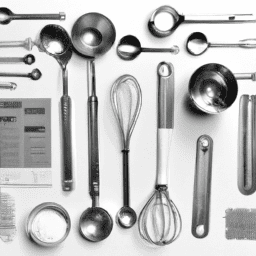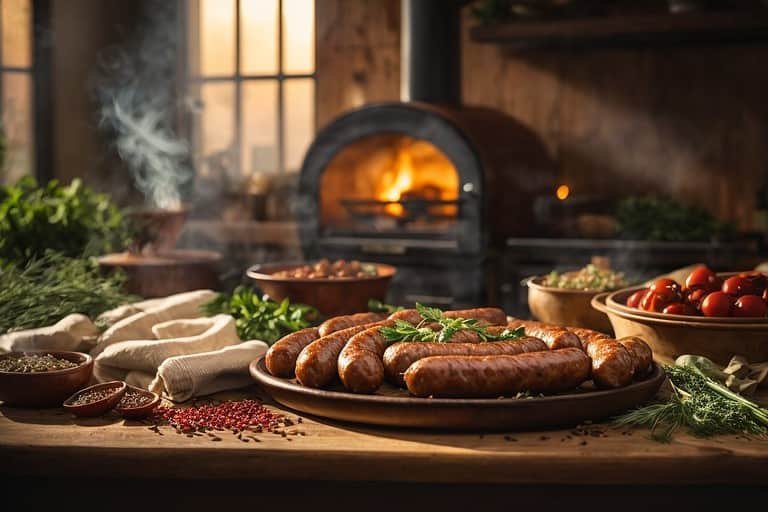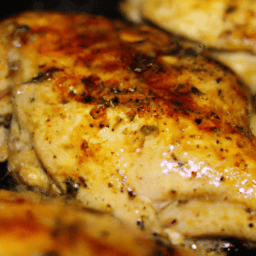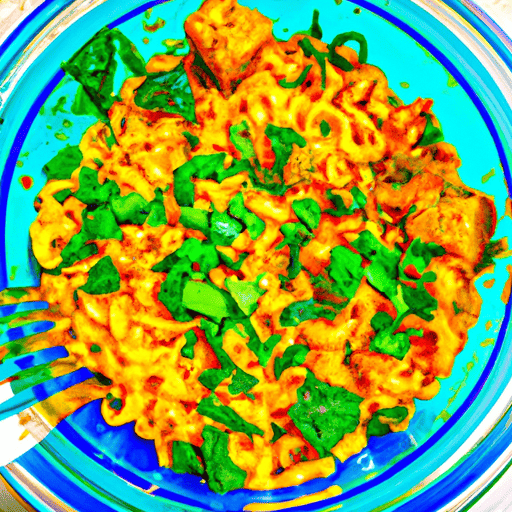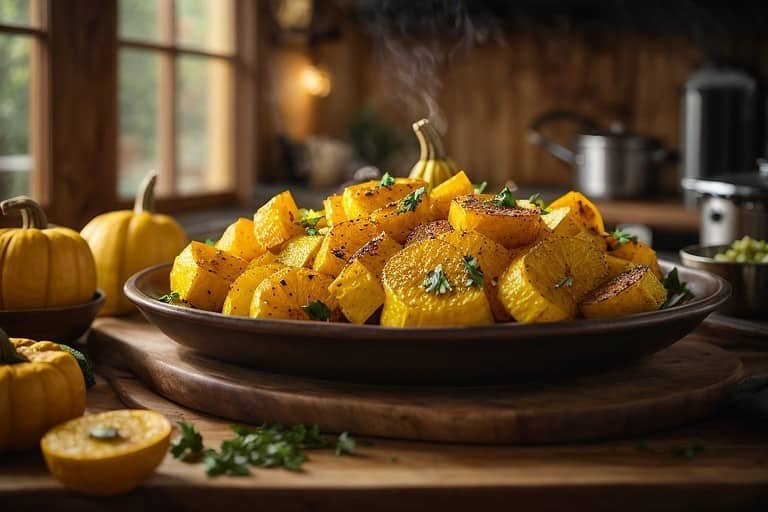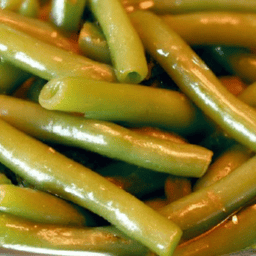Learn To Cook Basics
If you’ve always wanted to try your hand at cooking but don’t know where to start, look no further than “Learn To Cook Basics.” This helpful article is here to guide you along your culinary journey, providing essential tips and techniques to master the art of cooking. From understanding kitchen essentials to exploring simple recipes, this article will equip you with the skills and knowledge you need to become a confident and creative cook in no time. So put on your apron, grab your spatula, and let’s get started on this delicious adventure!
Understanding the Kitchen
Welcome to the exciting world of cooking! The first step in becoming a confident cook is to understand the kitchen environment. Familiarizing yourself with the various equipment and tools found in a kitchen will make your cooking experience more efficient and enjoyable.
Getting Familiar with Kitchen Equipment
The kitchen is filled with a wide range of equipment, each serving a specific purpose. From pots and pans to knives and cutting boards, it’s important to understand how to properly use and care for these tools. Investing in good-quality equipment will make your cooking journey much easier.
Understanding the Use of Different Kitchen Tools
Every tool in the kitchen has its own unique function. Knives are essential for slicing and dicing ingredients, while measuring cups and spoons ensure accurate measurements. Mixing bowls, colanders, and graters also play important roles in food preparation. By learning how to use these tools correctly, you’ll be well on your way to becoming a skilled chef.
Safety Measures in the Kitchen
Safety should always be the top priority in the kitchen. Familiarize yourself with the various safety measures, such as using oven mitts, pot holders, and kitchen gloves to protect yourself from burns. Additionally, learn how to properly handle and store sharp objects like knives, and always practice good hygiene when working with food. By incorporating these safety measures into your cooking routine, you can ensure a safe and enjoyable culinary experience.
Essentials of Cooking
Before diving into the world of cooking, it’s essential to have a strong foundation in understanding ingredients, cooking methods, and the concept of seasoning and flavors.
Understanding Ingredients
To create delicious meals, it’s important to understand the ingredients you’re working with. Familiarize yourself with fruits, vegetables, grains, meats, and herbs and spices commonly used in cooking. Learn how to select and store ingredients properly to maintain their freshness and flavor.
Major Cooking Methods
Cooking methods can greatly impact the taste and texture of your dishes. From frying and grilling to baking and steaming, each method brings its own unique results. Experimenting with different cooking methods will allow you to discover your own preferences and develop a diverse range of skills in the kitchen.
The Concept of Seasoning and Flavors
Seasoning and flavors play a vital role in elevating dishes from ordinary to extraordinary. Understand the basics of seasoning with salt, pepper, herbs, and spices, and how they can transform the taste of your food. Explore different flavor combinations and learn when to use bold or subtle flavors to enhance your dishes.
Basic Cooking Skills
Once you have a solid understanding of the essentials of cooking, it’s time to acquire some basic skills that will serve as the building blocks of your culinary journey.
Knife Handling
Proper knife handling is an essential skill for any cook. Learn different knife techniques, such as slicing, dicing, and chopping. Practice safe knife handling techniques to prevent accidents and ensure precision in your cuts.
Sauteing and Pan Frying
Sauteing and pan frying are cooking techniques that involve cooking food in a small amount of oil or fat over high heat. Mastering these techniques will allow you to quickly cook ingredients while retaining their flavor and texture.
Boiling and Steaming
Boiling and steaming are common methods for cooking vegetables, rice, and pasta. By understanding the correct timing and water-to-ingredient ratios, you can achieve perfectly cooked results every time.
Baking Basics
Baking opens up a whole new world of culinary possibilities. Learn the fundamentals of measuring ingredients, understanding oven temperatures, and following baking times accurately. Whether it’s baking bread, cookies, or cakes, you’ll soon be creating delicious homemade treats with confidence.
Meal Planning
Meal planning is an essential skill that helps you stay organized, save time, and make healthier choices. By considering different aspects of meal planning, you can create balanced, budget-friendly, and diet-specific meals.
Creating Balanced Meals
A balanced meal consists of a variety of nutrients from different food groups. Aim to include proteins, carbohydrates, healthy fats, and plenty of fruits and vegetables in your meals. Experiment with different combinations and food pairings to create well-rounded dishes.
Budget-Friendly Meals
Cooking on a budget doesn’t mean sacrificing taste or nutrition. Learn how to make the most of affordable ingredients, plan meals around sales and seasonal produce, and repurpose leftovers. With a little creativity, you can create delicious and satisfying meals without breaking the bank.
Planning Meals for Special Diets
Understanding how to plan meals for special diets is crucial in catering to specific dietary needs. Whether you’re cooking for someone with allergies, intolerances, or dietary restrictions, it’s important to familiarize yourself with alternative ingredients and cooking techniques. Always ensure that your dishes are both safe and enjoyable for everyone at the table.
Understanding Recipes
Recipes are valuable resources that guide you through the cooking process. Learning how to interpret cooking terminology, handle recipe ratios and modifications, and find reliable online resources will greatly enhance your ability to execute recipes successfully.
Interpreting Cooking Terminology
Recipes often include specific cooking terms that may be unfamiliar to beginners. Take the time to familiarize yourself with common terms such as “saute,” “blanch,” or “fold,” and understand what each technique entails. Clear understanding of cooking terminology is essential for executing recipes accurately.
Handling Recipe Ratios and Modifications
Recipes provide guidelines, but don’t be afraid to make modifications to suit your taste preferences or dietary needs. Understanding the impact of ingredient substitutions, adjusting measurements, and experimenting with flavors will allow you to make a recipe your own while still achieving delicious results.
Online Resources to Find Recipes
In the digital age, countless online resources offer a variety of recipes catering to every taste and dietary preference. Explore reliable websites, blogs, and online communities dedicated to cooking. Find reputable sources that provide clear instructions, helpful tips, and user reviews to ensure that the recipes you choose deliver the desired outcomes.
How to Master the Art of Stir-Frying
Stir-frying is a popular cooking technique that originated in Asian cuisine. By mastering the art of stir-frying, you can create flavorful and healthy dishes in a matter of minutes.
Choosing the Right Pan for Stir-Frying
When it comes to stir-frying, choosing the right pan is crucial. A wok or a skillet with a large cooking surface and high heat retention is ideal for even heat distribution and quick cooking. Select a pan that suits your stovetop and the quantity of food you’ll be stir-frying.
Proper Heat Management
Heat management is key when it comes to stir-frying. The pan needs to be well-heated before adding oil and ingredients. Cooking at the right temperature will ensure that the food cooks evenly and retains its color, texture, and flavor.
The Right Sequence for Adding Ingredients
The order in which ingredients are added to the stir-fry can significantly impact the final result. Start with ingredients that require longer cooking times and gradually add those that cook quickly. This ensures that all ingredients are cooked perfectly and that flavors are balanced throughout the dish.
The Science of Baking
Baking is as much an art as it is a science. Understanding the scientific principles behind baking allows you to achieve consistent and delicious results every time.
Baking Ingredients and Their Roles
Understanding the role of different baking ingredients is crucial for successful baking. Flour provides structure, while eggs bind and add moisture. Leavening agents like baking powder and baking soda help the dough or batter rise. Knowing how each ingredient works will help you troubleshoot and make adjustments to your recipes.
Temperature and Baking Time
Temperature and baking time are critical factors in achieving the desired outcome in baking. Follow the recipe instructions carefully to ensure that your baked goods are evenly cooked and not under or overdone. Investing in an oven thermometer can also help ensure accurate temperature readings.
Common Baking Challenges and How to Troubleshoot Them
Baking isn’t always a smooth journey, and many challenges can arise. Whether it’s a collapsed cake or tough cookies, knowing how to troubleshoot common baking issues will save you frustration and disappointment. From adjusting ingredient proportions to identifying potential oven temperature inconsistencies, there are solutions to almost every common baking problem.
Mastering Grill and Barbecue Basics
Grilling and barbecuing are popular cooking methods that infuse food with smoky flavors. By mastering the basics of grilling, you can create delicious and succulent grilled dishes for any occasion.
Selecting the Right Grill
Choosing the right grill is essential for a successful grilling experience. Whether you prefer a charcoal grill for its authentic smoky flavor or a gas grill for its convenience and ease of use, select a grill that suits your needs and cooking preferences.
Understanding the Concept of Direct and Indirect Grilling
Direct and indirect grilling are two different methods that yield distinct results. Direct grilling involves cooking food directly over the heat source, while indirect grilling requires placing the food to the side of the heat source. Understanding when to use each method will allow you to achieve the desired level of doneness and flavor.
Marination for Grilling
Marination is an excellent technique for infusing meat with flavor and tenderness. Learn how to marinate meat properly, considering factors such as acidity, time, and ingredients. Experiment with various marinades to discover your favorite flavors and combinations.
Safety Tips for Grilling
Grilling involves open flames and high heat, making safety a top priority. Keep a safe distance from the grill, never leave it unattended, and ensure that you have proper fire safety equipment on hand. Practice safe food handling techniques to prevent foodborne illnesses and enjoy a worry-free grilling experience.
Understanding Pasta and Sauces
Pasta is a versatile staple loved by many. Understanding how to cook pasta perfectly and pair it with the right sauces will elevate your pasta dishes to new heights.
Cooking the Perfect Pasta
Cooking pasta may seem simple, but achieving the perfect al dente texture requires attention to detail. Understand the cooking times and instructions for different types of pasta, and don’t forget to salt the cooking water for added flavor. Test the pasta frequently to ensure it is cooked to your preferred level of doneness.
Basics of Making Pasta Sauces
Pasta sauces contribute greatly to the overall flavor of a dish. Master a few basic pasta sauce recipes, such as tomato-based marinara or creamy Alfredo, and experiment with adding herbs, spices, and fresh ingredients to create your own unique sauces. Don’t be afraid to get creative and try new flavor combinations!
Types of Pasta and Pairing Them with Sauces
There are countless types of pasta available, each with its own unique shape and texture. Familiarize yourself with popular pasta shapes like spaghetti, penne, or linguine, and learn which sauces work best with each variety. While there are no strict rules, certain pasta shapes tend to hold certain sauces better, allowing for a harmonious combination of flavors and textures.
Culinary Hygiene and Food Safety
Maintaining proper hygiene and ensuring food safety are essential in every kitchen. Developing good habits and understanding the principles of food safety will help prevent foodborne illnesses and maintain the integrity of your dishes.
Food Handling and Personal Hygiene
Proper food handling and personal hygiene are crucial for preventing cross-contamination and the spread of bacteria. Wash your hands thoroughly before and after handling food, keep cutting boards and utensils clean, and separate raw meats from other ingredients to avoid cross-contamination.
Understanding Food Contamination
Understanding the different types of food contamination is essential for maintaining a safe kitchen environment. Familiarize yourself with the risks associated with biological, chemical, and physical contamination. Proper storage, handling, and preparation techniques will help minimize the chances of contamination and ensure the safety of your meals.
Safety Procedures in Cooking Meat
Cooking meat to the correct internal temperature is crucial for killing harmful bacteria and ensuring food safety. Use a meat thermometer to check the doneness of meat, poultry, and seafood, and follow recommended guidelines for safe cooking temperatures. Avoid undercooking or cross-contaminating meat to prevent foodborne illnesses.
Congratulations on completing this comprehensive guide to cooking basics! By understanding the kitchen environment, essential cooking skills, meal planning, recipe interpretation, and various cooking techniques, you’re well on your way to becoming a confident and proficient cook. Remember to have fun, experiment, and enjoy the delicious results of your culinary endeavors! Happy cooking!

